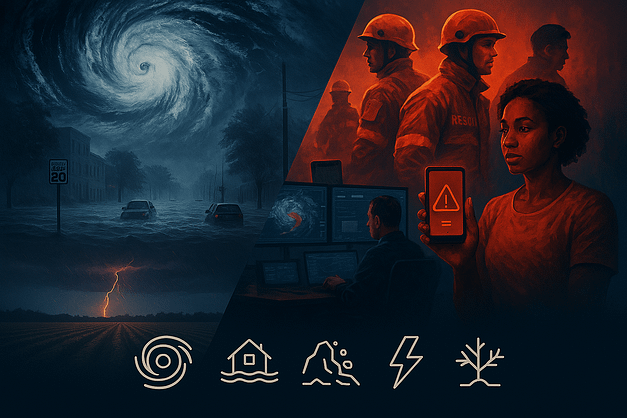Disaster Management
Safeguarding Lives, Assets & Operations in a Changing Climate
Why Disaster Management is Imperative Today
The frequency and severity of natural disasters are escalating due to climate change and urban expansion. What was once considered a “once-in-a-decade” event now strikes with alarming regularity, placing unprecedented pressure on public infrastructure, emergency services, and corporate operations alike.
Disasters no longer confine themselves to remote regions—they now disrupt cities, towns, highways, supply chains, and digital networks. This calls for proactive, data-driven disaster readiness embedded into both community resilience and business continuity planning.

🏢 Business Impact is Real—and Growing
it causes huge financial losses, disrupting supply chains, damaging infrastructure, and halting operations. Sectors like telecom, logistics, and utilities face major risks during extreme weather. Disaster preparedness is now essential for businesses, not just for safety, but to protect operations and finances.
🧍♂️ Protecting People First
Weather warnings save lives. Early forecasts help farmers, commuters, and coastal families prepare for storms and other extreme weather. Disaster management is not just about logistics—it ensures people get the right information at the right time to stay safe.
⚠️ Preparedness is No Longer Optional
Disasters are inevitable—it’s not about if they will happen, but when and how prepared we are to handle them. Organizations and communities must take proactive steps to detect, respond to, and recover from threats before they escalate. A strong disaster management framework ensures that safety measures, communication systems, and critical operations remain resilient, minimizing disruptions and enabling a swift recovery.

